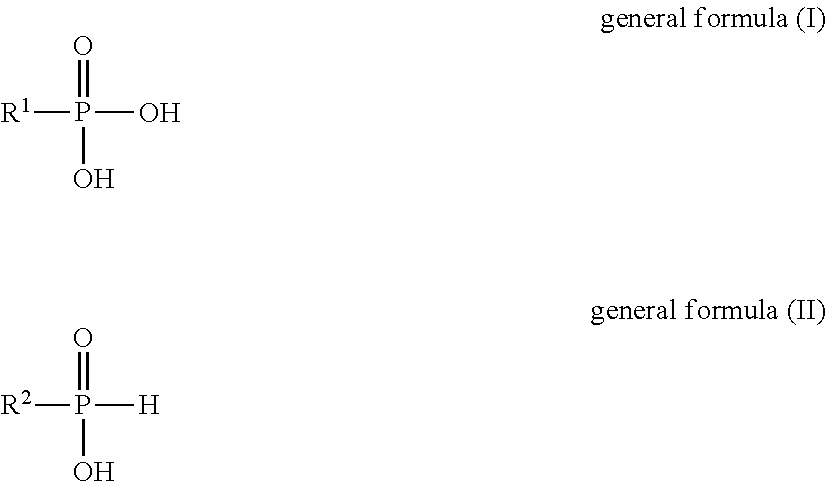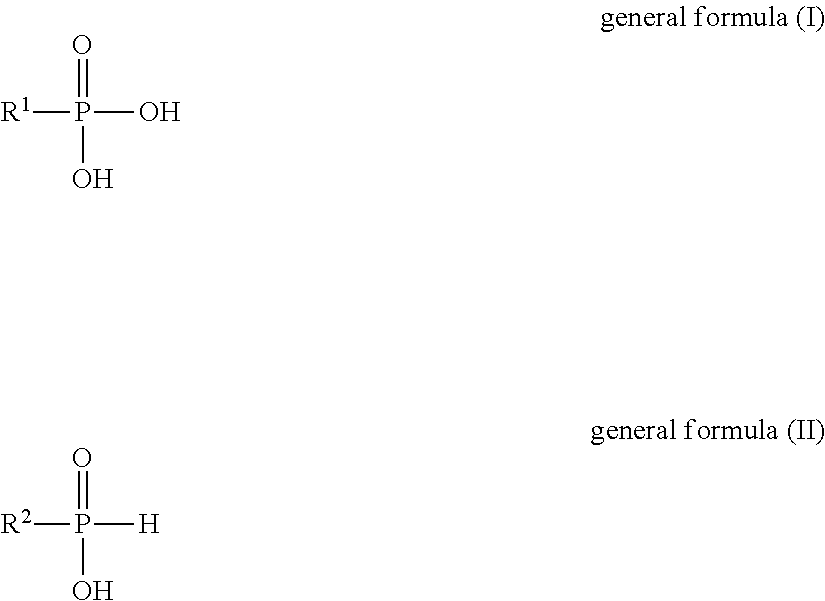Polyester film for protecting rear surface of solar cell
a solar cell and polyester film technology, applied in the direction of synthetic resin layered products, group 5/15 element organic compounds, transportation and packaging, etc., can solve the problems of fluorine resin film, poor gas barrier property and poor stiffness, fluorine resin film, etc., to reduce mechanical properties, excellent delamination resistance, good protection function on long-term use
- Summary
- Abstract
- Description
- Claims
- Application Information
AI Technical Summary
Benefits of technology
Problems solved by technology
Method used
Image
Examples
reference example 1
Production of Polyethylene Terephthalate (PET-a)
[0146]100 parts by weight of dimethyl terephthalate, 60 parts by weight of ethylene glycol and manganese acetate tetrahydrate were charged in an ester exchange reaction vessel, and melted and stirred under heating to 150° C. The reaction was performed while gradually increasing the temperature inside the reaction vessel to 235° C., and methanol produced was distilled out from the reaction vessel. After completing the distillation of methanol, phenylphosphonic acid was added thereto, and the ester exchange reaction was completed. Thereafter, the reaction product was placed in a polycondensation apparatus, to which both antimony oxide and titanium acetate were added.
[0147]Subsequently, the temperature inside the polymerization apparatus was increased from 235° C. to 290° C. over 90 minutes, and simultaneously the pressure inside the apparatus was decreased from the atmospheric pressure to 100 Pa over 90 minutes. When the stirring torque ...
reference example 2
Production of Polyethylene Terephthalate (PET-b)
[0149]The polymer (PET-a) obtained in Reference Example 1 was preliminarily dried at 150 to 160° C. for 3 hours, and then subjected to solid phase polymerization at 210° C. and 100 Torr in a nitrogen gas atmosphere for 7 hours. After completing the solid phase polymerization, the limiting viscosity number was 0.82 dL / g, and the terminal carboxyl group concentration was 10 eq / ton. The resulting polymer was designated as PET-b.
reference example 3
Production of Polyethylene Terephthalate (PET-c)
[0150]The polymer (PET-a) obtained in Reference Example 1 was preliminarily dried at 150 to 160° C. for 3 hours, and then subjected to solid phase polymerization at 210° C. and 100 Torr in a nitrogen gas atmosphere for 10 hours. After completing the solid phase polymerization, the limiting viscosity number was 0.90 dL / g, and the terminal carboxyl group concentration was 8 eq / ton. The resulting polymer was designated as PET-c.
PUM
| Property | Measurement | Unit |
|---|---|---|
| humidity | aaaaa | aaaaa |
| RH | aaaaa | aaaaa |
| temperature | aaaaa | aaaaa |
Abstract
Description
Claims
Application Information
 Login to View More
Login to View More - R&D
- Intellectual Property
- Life Sciences
- Materials
- Tech Scout
- Unparalleled Data Quality
- Higher Quality Content
- 60% Fewer Hallucinations
Browse by: Latest US Patents, China's latest patents, Technical Efficacy Thesaurus, Application Domain, Technology Topic, Popular Technical Reports.
© 2025 PatSnap. All rights reserved.Legal|Privacy policy|Modern Slavery Act Transparency Statement|Sitemap|About US| Contact US: help@patsnap.com



